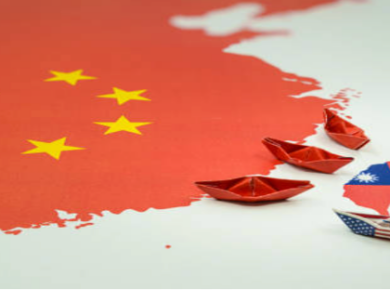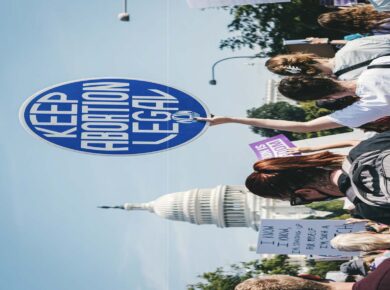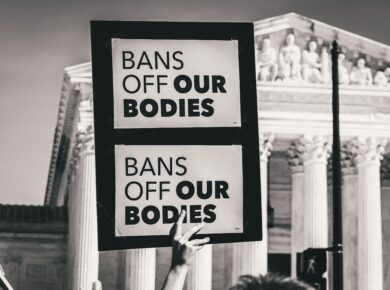Disclaimer: This blog post solely reflects the opinion of the authors and should not be taken to represent the general views of IPPR’s management/ editorial team or those of fellow authors.
Ten years after the Arab Spring, the youth unemployment rate (15-24 years old) is 36%. COVID-19 has only increased the rage of young Tunisians against the government. What is the impact of Tunisia’s past history on the current unstable situation?
Back to Bourguiba’s Regime
Back in 1957, Tunisia finally became an independent country. After a year of transition, on the 25th of July 1957, Tunisia was proclaimed a Republic and Habib Bourguiba became the first president. Even if Bourguiba’s regime, the “Neo Destour”, was not democratic, it was in favour of more rights for women and was against Islamic fundamentalism. For 31 years Bourguiba governed Tunisia in a “modern” and advanced way for its time, especially compared to the other Arab Countries. Bourguiba was in favour of Tunisia’s economic development.
The political situation worsened until Tunisia became a dictatorship. After slowly introducing personality cult over time, Bourguiba declared himself president for life (1975). Between December 1983 and January 1984, there was a sharp increase in bread prices which led to the emergence of massive protests known as the Tunisian Bread Riots. More than 100 protesters were killed because of police violence. It was a period of ferocious repression by Bourguiba and many supporters of the Islamic Tendency Movement were sent to prison.
Ben Ali
When Bourguiba was in power, security was assured by general Ben Ali. However, in November 1987, Bourguiba was declared unfit to fulfil his duties by a commission of doctors. On 7 November 1987, Ben Ali became president. His rise to power was also called “the medical coup d’état”.
Ben Ali’s policies aimed towards modernity, development and the improvement and protection of women’s rights. He promoted many advancements such as free education for all, family planning, a free and modern healthcare system, a literacy campaign, an effective administrative, financial and economic organization and modern infrastructures. Despite that, he was a dictator who did not respect fundamental rights, such as freedom of expression and freedom of press. All media was heavily censored in order to maintain control and order.
The Arab Spring, 2011
The dictatorship slowly came to an end. Twenty-four years later, in 2011, the Arab Spring emerged when Mohammed Bouaziz set himself on fire to protest against the injustices caused by the police and the government. Bouaziz became a symbol and inspired the Tunisian population to organise street protests against high unemployment, poverty and political repression. People were angry, they were fighting for their rights and for more freedom. The social distress was also a result of the economic difficulties that many Tunisians were facing. Farmers living in rural areas and even young students with a degree had little hope of finding a job. Many of these students had to emigrate to France or other neighbouring countries to find employment.
Additionally, government corruption was also very common. Tunisians were well aware of the dictatorship’s cracks. Many authors, journalists and political opponents were censored by the government. These protests lead to the death of 338 people who were killed by the police and the army (Egypt Independent, 2012). In addition, 2174 people were injured (Egypt Independent, 2012).
I remember this period of chaos vividly.
The government closed schools and universities. I was 8 years old and it was the 13th of January 2011. It was a Thursday morning and I was at school. University students from the Arab school next to ours had put the Tunisian flag on fire and thrown it in the trash. My mother picked me, my brother and as many friends as could fit in the car as quickly as possible. It was dangerous to be in the streets, where people were armed and were ready to profit from the confusion and uncertainty. We arrived home and that night I remember hearing my parents talking about what to do. They decided that we would leave the day after.
Finally, in a last attempt to control the situation, on 13 January 2011, Ben Ali appeared on national television and promised that he would create 300,000 new jobs in order to solve the unemployment crisis. Ben Ali also criticised the protesters calling them “extremists” and accused the foreign television channels of spreading disinformation about Tunisia. Ben Ali later declared the state of emergency, dissolved the government and fled to Saudi Arabia. After Ben Ali’s departure, the military took control of the airport and closed the country’s airspace. Fouad Mebazaa, a parliamentary speaker, took over the reins of the country and was tasked to organise new elections.
Why the Arab Spring in Tunisia?
When compared to other countries in the region, Tunisia can be considered to be a model Arab country. This was mainly because of the past social and economic reforms put in place by Bourguiba. For example, Tunisia is among the countries which have the highest literacy rates in Africa (79.04%) (Macrotrends, 2021). This is important especially when looking at the literacy rate back in 1984, which was as low as 48.19% (Macrotrends, 2021). Furthermore, polygamy is prohibited, women have the right to divorce and the age at which girls could marry was raised at 17. Under President Bourguiba, Tunisia was the first country in North Africa to extend women’s rights and provide free education to everyone. Also, unlike the other Arab nations, such as Saudi Arabia and the Emirates, the Tunisian government did not tolerate Islamic fundamentalists. This resulted in Tunisia being a relatively modern and forward-thinking country.
All these factors made the Tunisian population feel that they had the right and it was their duty to react to the oppression and dictatorship established by Ben Ali. There was also the fear that Ben Ali would follow the same path as Bourguiba in the last years of his career, slowly becoming a dictator.
What are the consequences?
The Tunisian-led movement rapidly spread throughout the Arab world, notably in Egypt, Bahrein, Libya and even Syria. The “Arab Spring” uprisings of 2011 became one of the most important crises in recent times, which resulted in social movements and regime changes across the Middle East and North Africa. In Tunisia, the immediate consequences were that Ben Ali fled the country and thousands of prisoners were released. The internet became more freely available and censorship disappeared.
On the other hand, Tunisia continues to suffer from political weakness, lack of investment, large deficits and high unemployment rates, which, according to the National Institute of Statistics, increased from 13% before the revolution to 36% in the 15-24 age category (Figure 1). Economic instability is at the core of the social unrest. According to the International Labour Organization (2013), which looks at the causes of social unrest in the world, unemployment and especially youth unemployment is one of the main factors. Furthermore, instability is considered to be one of the main causes of terrorism. The countries that are economically unstable have the propitious conditions for schooling and training of terror (Campos & Gassebner, 2009). People find themselves in a situation where they have nothing to lose and may opt to join a terrorist organization. In Tunisia, various terrorist attacks took place since the revolution in 2011. For example, at the Bardo museum (18 March 2015), in Tunis, at the Sousse Beach Resort (26 June 2015) and more recently a suicide bombing targeting a police patrol near the US embassy (6 March 2020).
Figure 1: Youth Unemployment in Tunisia from 2011 to 2020
Source: The World Bank, Youth unemployment in Tunisia from 2011 to 2020. Youth unemployment refers to the share of the labour force ages 15-24 without work but available for and seeking employment.
Ten years after, Tunisia is still in a very precarious and unstable situation. The tourism industry, which is vital for the economy of the country, has been wiped out due to COVID-19 and the political instability since the revolution in 2011. The inequality levels keep rising, and the government has failed numerous times to tackle them. The pandemic has only worsened unemployment in Tunisia.
The United States Institute of Peace (2020) has defined the situation in Tunisia to represent “an encouraging yet incomplete victory against authoritarian rule and violent extremism” (United States Institute of Peace website, 2020). Furthermore, the “persistent economic crisis, political disaffection, and the inherent difficulties of a major political and social transition” is still threatening the country’s stability (United States Institute of Peace website, 2020).
Tunisia’s future still remains uncertain as the protestors keep striking. In January 2021, a series of protests started again but the government only seems to respond with police brutality, similarly to 2011. In the past month, hundreds of people were arrested, with mass deployment of the police and the army. According to the Tunisian Human rights league (LTDH), 30% of the 1400 protestors arrested are minors. Young protestors want reforms and change. There have not been any police reforms since the revolution and the situation will only worsen if there will not be serious changes in the government. Many changes could be made to reduce corruption. Furthermore, to stop the social unrest, there needs to be a shift in the economic sector. With COVID-19, the tourism industry is not generating enough revenue to remain Tunisia’s main economic sector in the next years. Achieving political stability seems the only way out to avoid another revolution. It will make it possible to prevent more terrorist attacks which have already caused much harm.
What is certain is that Tunisia’s past history of revolution has changed the Arab world in multiple ways: economically, socially but mostly, politically. From Libya to Egypt, Bahrein and even Syria, where a huge conflict and an ongoing civil war originated from the Arab Spring that has become a major global issue because of the huge number of casualties. Bourguiba’s regime has had a paramount impact on Tunisia and the reforms aimed at improving education and the economy. Nonetheless, much progress still needs to be made to avoid another Revolution in the next years.
Sources
- AFP. (2012) “Enquiry says 338 deaths during Tunisian revolution”, World section, Egypt Independent.
- Assaad Ragul. (2011) “How will Tunisia’s Jasmine revolution affect the Arab world?”, Brookings.
- Barnell Owen. (2017) “Seven years after Arab Spring revolt, Tunisia’s future remains uncertain”, FRANCE 24.
- Campos, N.F., Gassebner, M. (2009) “International terrorism, political instability and the escalation effect”. Econstor, Leibniz Information Centre for Economics.
- Holmes, R.K., et al. (2017) “Tunisia’s president must boost economy without repeating mistakes of the past”. The Hill. Retrieved from https://thehill.com/opinion/international/357135-tunisias-president-must-boost-economy-without-repeating-mistakes-of-the
- International Labour Organization. (2013) “Are economic stagnation and unemployment fueling social unrest”. Retrieved from https://www.ilo.org/newyork/voices-at-work/WCMS_217280/lang–en/index.htm
- Khiari Nadia. (2011) Willis from Tunis – Chroniques de la Révolution
- Khiari Nadia. (2012) Willis from Tunis 2
- Macrotrends. (2021) Tunisia litteracy rate 1984-2021. Retrieved from Source






